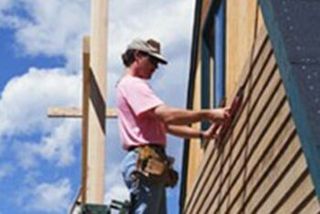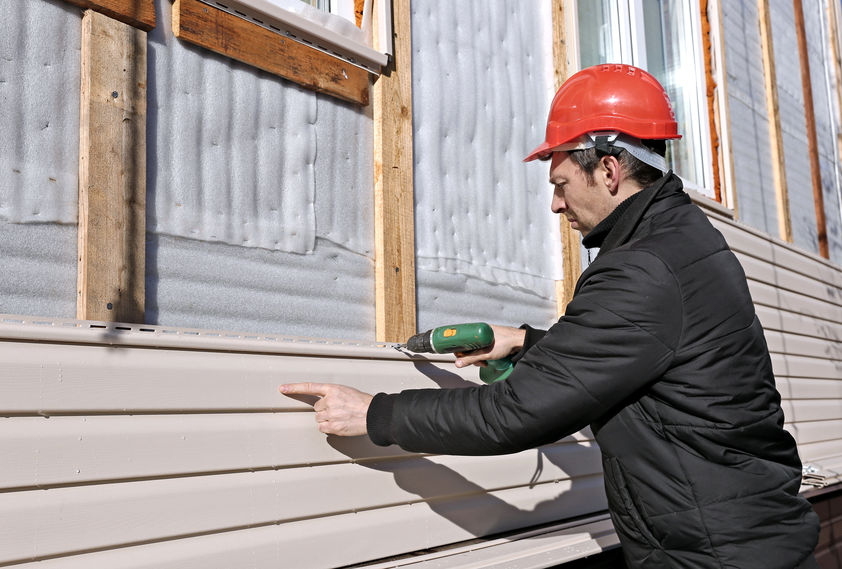The Vital Guide to the Various Kinds Of House Siding and Their Distinct Advantages
In the world of home enhancement, choosing the right siding is an important choice that affects both aesthetic allure and practical performance. With so many choices to think about, which siding product genuinely stands out for your certain job?
Wood Exterior Siding
Wood home siding, a popular choice for property outsides, uses a classic aesthetic that incorporates natural charm with architectural honesty. This house siding product is available in various styles, including clapboard, roof shingles, and board-and-batten, enabling home owners to tailor their façade to match their layout choices. Wood home siding is generally crafted from sturdy varieties such as cedar, redwood, or yearn, which are recognized for their durability and ability to endure environmental stressors.
One of the main advantages of timber siding is its exceptional insulation residential or commercial properties, which can add to energy performance and reduced heating prices. Additionally, timber exterior siding is naturally degradable, making it an eco-friendly choice when sourced sustainably. Regular maintenance, including paint or discoloration, can extend its life expectancy and enhance its look, allowing house owners to protect the all-natural appeal of the wood.
Nonetheless, prospective downsides consist of sensitivity to bugs, rot, and climate damage, requiring ample treatment and maintenance - morris siding contractor. Regardless of these concerns, when effectively taken care of, timber house siding can give a sturdy and gorgeous remedy that enhances the personality of a home while using a warm, inviting environment

Vinyl Home Siding
Plastic house siding has actually become a leading option for house owners looking for a low-maintenance exterior choice that incorporates longevity and affordability. This flexible product is crafted from polyvinyl chloride (PVC), making it resistant to different climate condition, including moisture and UV rays. Because of this, plastic siding does not warp, rot, or discolor, making sure lasting visual appeal.
Among the key advantages of vinyl home siding is its extensive series of shades and styles, enabling property owners to achieve the preferred try to find their residential property without the need for frequent repainting. Furthermore, vinyl siding is easy to set up, which can significantly decrease labor expenses during construction or restoration projects.
Plastic home siding additionally adds to power performance. Numerous alternatives feature insulation backing, which improves thermal efficiency, helping to keep comfortable interior temperatures and potentially decreasing power expenses. Additionally, its smooth surface assists in very easy cleansing, needing just regular cleaning with a yard hose pipe to get rid of dust and particles.
Fiber Concrete Home Siding
Fiber cement home siding has obtained grip amongst home owners and home builders alike due to its amazing combination of longevity and aesthetic flexibility. Composed of a blend of sand, cellulose, and concrete fibers, this house siding choice is crafted to endure severe weather problems, including high winds, heavy rainfall, and temperature level fluctuations, making it a durable option for residential exteriors.

One of the key benefits of fiber cement exterior siding is its resistance to pests, such as termites, and discover here its non-combustible nature, offering improved fire safety. morris siding contractor. Additionally, it is available in a vast selection of styles, textures, and colors, permitting home owners to achieve their preferred aesthetic without compromising efficiency
One more benefit is its reduced maintenance requirements; fiber concrete home siding commonly requires painting or staining every 5-10 years, which is less frequent than other products. Its longevity adds to a reduced total expense of ownership, as it lowers the need for regular repairs or substitutes.
Eventually, fiber concrete siding represents a superb investment for those looking for a resilient, eye-catching, and versatile outside option, combining both kind and function to enhance the home's visual charm.
Metal Home Siding
The appeal of metal house siding exists in its robust sturdiness and modern-day aesthetic appeal, making it a favored choice for modern style. Offered in products such as aluminum and steel, steel home siding uses a variety of surfaces and colors, permitting property owners to accomplish a tailored appearance that matches their design vision.

Energy effectiveness is one more considerable benefit, as numerous metal exterior siding products are created with insulation alternatives that help regulate interior temperature levels. This can bring about lowered energy costs over time. Furthermore, steel house siding is commonly recyclable, making it an eco pleasant option for sustainability-minded home owners.
The setup procedure for metal home siding can be reasonably uncomplicated, resulting in a quicker turn-around time for building and construction projects. In general, metal exterior siding integrates capability and design, making it a functional option for those looking for a visually attractive and enduring outside coating.
Brick and Rock House Siding
Brick and stone home siding stands apart as a classic selection that enhances the aesthetic charm of any home. Known for their sturdiness and reduced maintenance, these materials provide an outstanding return on financial investment while elevating the residential or commercial property's curb allure. Offered in numerous shades, structures, and patterns, brick and stone can be tailored to fit varied building styles, from conventional to modern.
Among the key advantages of brick have a peek at this site and rock home siding is their energy efficiency. Both materials possess all-natural shielding buildings that help regulate indoor temperatures, potentially reducing heating & cooling costs. Additionally, they offer exceptional fire resistance compared to other house siding choices, contributing to go to this web-site improved security.
One more advantage is their durability. Block and stone can last for decades, often requiring minimal maintenance beyond occasional cleaning. Unlike timber siding, they are unsusceptible insects and rot, making certain a lasting outside that stands up to the elements.
Final Thought
In summary, the choice of siding considerably impacts a home's visual allure, energy effectiveness, and upkeep requirements. Each sort of siding-- whether wood, vinyl, fiber steel, brick, or concrete and stone-- uses special advantages customized to numerous property owner preferences and ecological problems. Recognizing these choices makes it possible for notified choices that improve both the resilience and visual charm of household exteriors. Inevitably, choosing the ideal home siding is necessary for accomplishing a balance between performance and layout in domestic design.
One of the key benefits of wood home siding is its excellent insulation homes, which can contribute to power performance and lower heating expenses. In addition, wood siding is naturally degradable, making it an eco pleasant alternative when sourced sustainably.One of the main benefits of metal house siding is its resistance to various ecological factors.Power effectiveness is another substantial advantage, as lots of metal siding products are created with insulation alternatives that aid regulate interior temperature levels. Each kind of siding-- whether wood, vinyl, fiber concrete, steel, or block and stone-- offers distinct benefits tailored to different property owner choices and ecological problems.